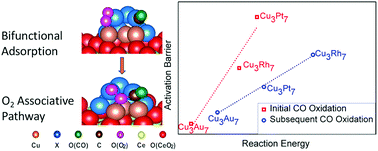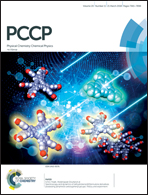A computational study of supported Cu-based bimetallic nanoclusters for CO oxidation
Abstract
In this study, we used DFT calculations to investigate the bi-functional nature of Cu-based alloy nanoclusters (NCs) supported on CeO2(111) for CO oxidation. More specifically, we studied the reaction pathways on Cu3Pt7 and Cu3Rh7via the O2 associative (OCOO) and dissociative mechanisms. We find that CO oxidation on Cu3Pt7 proceeds via the O2 dissociation pathway, while Cu3Rh7 prefers the OCOO mechanism. Combined with our previous results on Cu3Au7, we find that bi-functional CO oxidation on Cu-based alloys follows a Brønsted–Evans–Polanyi relationship, which provides a useful metric for the design of bi-functional alloyed catalysts.



 Please wait while we load your content...
Please wait while we load your content...